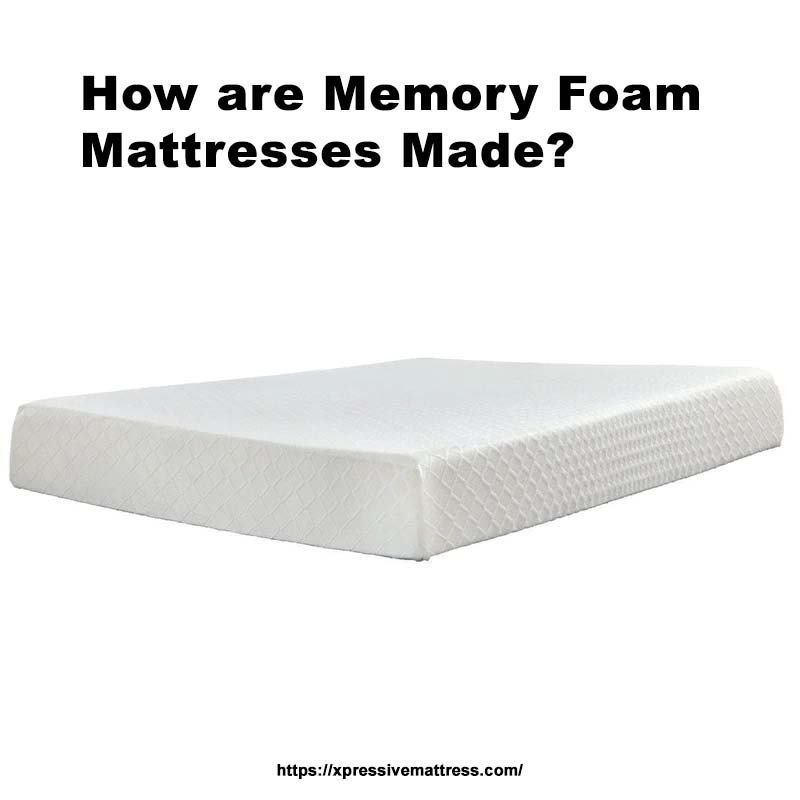Gluing foam mattresses together is a great way to save money and time.
It’s an easy process that can be done in just minutes with the right materials!
You’ll need some strong adhesive glue, such as
- Gorilla Glue or Liquid Nails.
- Scissors.
- Measuring tape.
- And, of course, your two pieces of foam mattress material.
You can easily join these items for one large piece – perfect for creating custom-sized beds or cushions!
Plus, it will help keep your bedding secure, so there won’t be any shifting around during sleep.
The best part?
No sewing is required – making this project quick and simple even for beginners!
What Are The Benefits Of Gluing Foam Mattress Together?
Gluing foam mattresses together has many benefits.
- It helps to create a more comfortable sleeping surface as the two layers of foam can be combined in different ways for maximum comfort and support.
- Gluing them together prevents any shifting or sliding between the mattress pieces, which could cause discomfort during sleep.
- This method is much cheaper than buying an entirely new mattress set since you only need to purchase glue instead of multiple components such as box springs and frames that are usually required when purchasing a complete bedding system from scratch.
- Finally, by using adhesive rather than mechanical fasteners like screws or nails, there’s no risk of damaging your furniture while assembling the beds. That makes it easier on both yourself and your wallet!
The advantages don’t stop here: Gluing also simplifies cleaning because all surfaces remain intact.
If one layer needs replacing due to wear and tear, remove the old piece without worrying about taking apart the whole structure – saving time and money again!
Also, with proper care, these glued joints will last longer.
Hence, the overall investment pays off over long-term use compared to traditional methods, where parts may become loose after a few years, leading to costly repairs down the road.
What Materials Are Needed To Glue Foam Mattress Together?
To glue foam mattresses together, you will need a few materials.
First and foremost is the adhesive itself.
This can be either an industrial-strength spray or liquid contact cement.
You’ll also want painter’s tape on hand to mark off areas that should not get glued down and sandpaper in case any rough edges need smoothing out before gluing begins.
Additionally, it may help to use clamps and weights such as books or bricks when applying pressure while drying so that everything stays firmly attached once dry!
Finally, ensure you have plenty of rags for cleaning up excess glue after application.
No one wants sticky fingers afterward!
What Is The Proper Procedure To Glue Foam Mattress Together?
Gluing foam mattresses together is a great way to ensure they stay in place and provide extra support.
Here’s the proper procedure for gluing them:
- Start by cleaning both surfaces of the mattress with rubbing alcohol or soap and water, then let it dry completely before applying glue.
- Apply an even adhesive layer on one side using spray-on contact cement or liquid latex rubber.
- Place two pieces of foam together firmly so there are no gaps between them.
- Use clamps along all edges to hold everything securely while drying (this can take up to 24 hours).
- Finally, remove any excess glue from around the seams once dried – use sandpaper if necessary!
- This will ensure your glued mattress stays secure over time without falling apart at the seams!
What Are The Key Factors To Consider When Gluing Foam Mattress Together?
When gluing foam mattresses together, there are several key factors to consider.
- It is the type of glue you use. It should be designed for bonding foam materials such as polyurethane or latex foams.
- Ensure that both surfaces being glued are clean and free from dirt or debris before applying any adhesive.
- Ensure that your work area has adequate ventilation so fumes don’t build up while working with adhesives. This can cause health risks if inhaled in large quantities over a long period!
- Always follow manufacturer instructions when using an adhesive product: read all safety warnings carefully and wear protective gear (e.g., gloves) where necessary to avoid skin contact with chemicals used in some glue/adhesives.
Taking these steps into account while joining two pieces of the mattress together via gluing will help guarantee successful results every time!
What Are The Precautions To Take When Glueing Foam Mattress Together?
When gluing foam mattresses together, it is important to take the following precautions:
- Wear protective gloves and a face mask when handling any adhesive or solvent.
- Make sure that both surfaces are clean before applying the adhesive.
- Use appropriate pressure while pressing down on each surface for maximum adhesion.
- Allow sufficient time for drying after application (usually 24 hours).
- Test out your mattress by lying on it once dry – if there’s still some give in certain areas, you may need to apply more glue!
- Store new glues away from heat sources such as radiators or direct sunlight so they don’t become too hot and lose their effectiveness over time.
- Dispose of all used materials responsibly according to local regulations. Never pour them into drains or sewers!
These simple steps will ensure that your glued-together foam mattress stays secure and comfortable for years to come!
What Are The Potential Problems When Glueing Foam Mattress Together?
When gluing foam mattresses together, there are potential problems that can arise.
- The adhesive must be strong enough to hold two foam pieces securely. Otherwise, it may not last long and could cause discomfort or even injury when sleeping on the mattress.
- If too much pressure is applied during gluing, it can damage both surfaces, significantly reducing their lifespan.
- Incorrect application techniques include using a roller instead of an applicator brush. For example, it could lead to uneven coverage, resulting in weak spots where air pockets form between layers, causing them to separate over time, leading to reduced comfort levels and durability issues with your mattress construction project.
Finally, some adhesives contain chemicals known to emit fumes, so proper ventilation should always be ensured before starting any work involving these products.
Failure to do so might result in health risks due to adverse reactions from breathing toxic substances into your lungs!
What Are The Alternative Methods To Glueing Foam Mattress Together?
There are several alternative methods for gluing foam mattresses together.
These include sewing, taping, stapling, and zipping.
Sewing is a great way to join two pieces of foam mattress material, as it creates an even stronger bond than gluing.
However, this method requires more time and effort compared to other alternatives.
Taping can also be used for connecting the edges.
Still, it may not provide enough strength compared to stitching or gluing them together.
Stapling is another option that provides good adhesion between the materials without using any adhesive products.
However, staples need replacing over time due to wear and tear, so they should only be considered if you plan on regularly using your mattress for long periods.
Lastly, zippers offer a secure connection that won’t come apart easily – making them ideal when needing quick access to the interior layers, such as changing bedding sheets.
These, too, require regular maintenance checks since zipper teeth tend to break down after prolonged usage!
Wrapping Up: How To Glue Foam Mattress Together?
In conclusion, gluing foam mattresses together is a great way to save money and time.
It’s easy to do with the right materials and tools.
You’ll need an adhesive that can securely bond two pieces of foam without damaging them or causing any health risks.
Contact cement works well for this purpose.
Additionally, it would help if you use clamps or weights on top of the mattress while it dries to ensure a strong hold between both layers of foam.
If done correctly, gluing foam mattresses together can be a very rewarding experience!
Finally, ensure your workspace is clean before beginning so no contaminants are present when applying glue.
Otherwise, your project may not turn out as expected!



